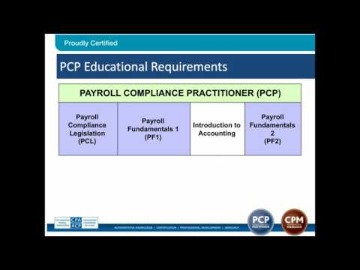Marginal Tax Rate Definition TaxEDU
Content

The top 50% paid 97%, earning 87% and leaving the bottom 50% paying 3% of the taxes collected and earning 13% of the income reported. Based on the summary of federal tax income data in 2009, with a tax rate of 35%, the highest earning 1% of people paid 36.7% of the United States’ income tax revenue. IRS computers routinely make adjustments to correct mechanical errors in returns. In addition, the IRS conducts an extensive document matching computer program that compares taxpayer amounts of wages, interest, dividends, and other items to amounts reported by taxpayers.

The maximum federal tax rate on capital gains is 20% for assets held for more than 12 months. The graduated rates of tax apply to capital gains from How Do Federal Income Tax Rates Work? assets held for 12 months or less. While tax credits reduce your actual tax bill, tax deductions reduce the amount of your income that is taxable.
Excise tax
Currently, Alaska, Florida, Nevada, South Dakota, Tennessee, Texas, Washington, and Wyoming don’t have an income tax. Take a taxpayer who has one child and is eligible for the Child Tax Credit. The taxpayer’s taxable income is $50,000, and the taxpayer’s tax liability is $4,500. The Child Tax Credit directly reduces the tax liability from $4,500 to $2,900. The Child Tax Credit is not applied to the $50,000 of taxable income; instead, it is directly applied to the tax liability amount. If a taxpayer has more information to submit to the IRS, they usually attach or provide additional forms.
- When you start a job you use IRS form W-4 to indicate how your employer should withhold taxes from your pay.
- This tax rate chart shows how the mechanics of this work.
- The Internal Revenue Service announces any changes to tax brackets and rates annually.
- The progressive tax system increases the tax rate as taxable income increases.
- This includes income from capital gains, gambling winnings, rents, royalties, interest and dividends, business earnings, unemployment compensation, and even lottery winnings.
- Federal income taxes apply to all forms of earnings that make up a taxpayer’s taxable income, including wages, salaries, commissions, bonuses, tips, investment income, and certain types of unearned income.
The standard deduction is the portion of your income that isn’t subject to taxes. The standard deduction is a fixed dollar amount based on your filing status, whether you’re age 65 or older, whether you’re blind, and other factors. AMTI generally is computed by starting with regular taxable income, adding tax preference deductions , and making special adjustments to some of the tax items that were used to calculate taxable income. For example, the taxpayer must add back all state and local income taxes deducted in computing regular taxable income.
Tax Brackets: Do You Really Know How You’re Taxed?
Ordinary dividends are taxed at the same rate as the shareholder’s other income, and rates range from 10% to 37%. Qualified dividends are taxed at lower capital gains tax rates, ranging from 0% to 20%. The 2022 President’s Budget would increase capital gains rates and virtually end stepped-up basis for the highest-income Americans, thereby ensuring their investment gains are subject to income tax. Measuring income in this more comprehensive manner matters relatively little for estimating most families’ tax rates, as most families have few investment assets. However, it matters greatly for the wealthiest families for whom such unrealized and thus untaxed gains are a large share of their income.

Remember, your taxable income is your income after you’ve subtracted anydeductions, which lower your taxable income. The income tax brackets work as a tiered system, not a flat tax percentage on all your income. So when you hear you’ve moved up a tax bracket, don’t be scared.
What tax bracket are you in, and what does that really mean?
But, of course, rates are not the only factor in your final tax bill. You can lose tax benefits that phase out at higher income levels, such as tax credits for higher education. In some tax scenarios, it might make sense to avoid higher tax brackets if possible. Say you’re single with no dependents, and your taxable income is $9,000. Your marginal tax rate, according to the Federal Income Brackets chart below, is 10 percent.
- They are determined by applying a tax rate, which may increase as income increases, to taxable income, which is the total income less allowable deductions.
- The Amendment removed the need for the income tax to be apportioned among the states on the basis of population.
- Some deductions of corporations are limited at federal or state levels.
- 2022 tax bracket calculator to determine your estimated tax rate.
- These treaties reduce the chance of double taxation by allowing each country to fully tax its citizens and residents and reducing the amount the other country can tax them.
A tax is imposed on net taxable income in the United States by the federal, most state, and some local governments. Income tax is imposed on individuals, corporations, estates, and trusts. The definition of net taxable income for most sub-federal jurisdictions mostly follows the federal definition. Don’t panic if it looks as though your income puts you in a higher bracket than you expected. The brackets are based on your taxable income, which is lower than your gross income because adjustments and deductions are subtracted. A tax rate is a percentage at which an individual or corporation is taxed.
They are determined by applying a tax rate, which may increase as income increases, to taxable income, which is the total income less allowable deductions. Individuals and corporations are directly taxable, and estates and trusts may be taxable on undistributed income. Partnerships are not taxed , but their partners are taxed https://quick-bookkeeping.net/ on their shares of partnership income. Residents and citizens are taxed on worldwide income, while nonresidents are taxed only on income within the jurisdiction. Several types of credits reduce tax, and some types of credits may exceed tax before credits. An alternative tax applies at the federal and some state levels.
In addition, the Federal individual income tax is only one tax. However, alternative tax rates could also be estimated that account for other taxes, such as the payroll tax, estate and gift tax, corporate income tax, and taxes paid to foreign governments. Moreover, one could use alternative definitions of income or adopt various approaches to the treatment of certain subsidized activities such as charitable giving.
